Professional coffee roasting | explanation of "PIMPIN'S PROFILE" roasting method
Professional coffee knowledge exchange more coffee bean information please follow the coffee workshop (Wechat official account cafe_style)
Many people think that even after reading books and watching teaching videos on the website, it is still difficult for us to understand the baking curve, and the roasted coffee beans always fall short of psychological expectations.
I have the honor to visit the major well-known roasters, and have studied and used many kinds of roasters, and have a preliminary understanding of coffee roasting.
In my opinion, no matter which roaster you use or which master's baking curve you copy, if you don't understand the raw bean itself and how the roaster works, you will never get the results you want.
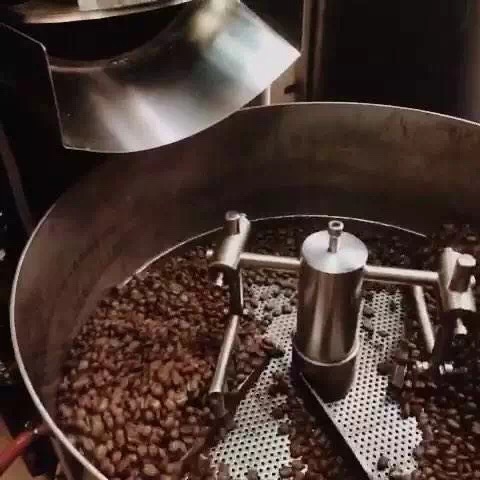
Believe me, I've seen a lot of bakers who don't know anything about raw beans and roasters, so that the originally very good baking technology doesn't work as well as it should.
It's really hard to write a research report or article on baking because everyone uses a different roaster and it's almost impossible to find a unified method.
Let's take a look at two baking graphs, one from the Loring hot air AC roaster and the other from the Probat direct heat conduction + AC roaster.
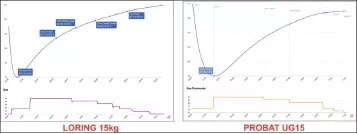
The two curves are also used to bake 5kg beans, and the finished product is espresso, but the thermodynamic characteristics and temperature probes of the two roasters are different.
But if you control several key points in the baking process, even the baking oven with great difference can complete the baking with the same quality and almost the same taste in a similar time!
This is the theme of this article, "Pimpin Profiles", the meaning of existence. In today's article, we will deeply study and explore the knowledge of Pimpin Profiles, and through the analysis of several key points in the baking process, as well as the heating rate (Rate of Rise, referred to as "RoR") and variable temperature rate (Rate of Change, referred to as "RoC"), and the temperature trajectory after entering "explosion" and "explosion", let's explore the best baking method suitable for all baking systems.
As bakers, we know very well that the baking curve depicts the complete process of coffee beans ripening, rather than simply calculating the "explosion" time! Once the coffee is in the roaster, the ripening process has begun.

Setting a baking curve for each particular type or type of baking oven is the biggest challenge that bakers face every day, and they must also understand the tastes of their customers to ensure that the finished product meets the needs of the public.
In order to control the taste of coffee, I will try to improve a certain key point every time, and adjust my baking curve according to the feedback of the finished product, taking into account the characteristics of raw beans, the amount of baking, the characteristics of the roaster and other factors.
Especially when I encounter a new or unknown baking system, I will manually record the key data and then adjust it until the curve meets the requirements of RoR, RoC and other key points. RoR and RoC are the key factors in deciding how to adjust your heat source and vitality, both of which determine your baking speed, whether the baking curve meets the key requirements and, more importantly, the taste of the finished product. Therefore, only by collecting, collating and analyzing the data, can you make a new baking curve leisurely and reasonably in the face of a new coffee or roaster.
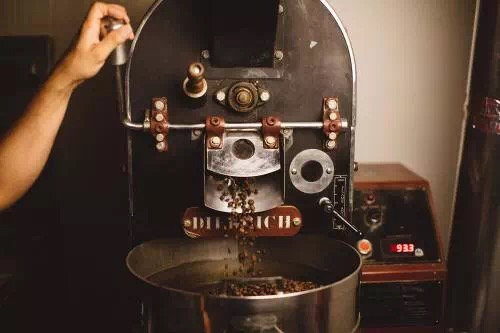
In addition, the temperature probe is also very important! It is the temperature data collected by the temperature probe that determines how we make the baking curve. The location and model of each baking furnace probe are different, such as 3mm and 6mm thick, buried and exposed, J and K models. The most ideal probe position is at the bottom of the roaster, where the coffee beans are more concentrated when rotating in the oven.
Through my personal experience, I have listed a few key points that should be paid attention to in the coffee roasting process, and only by mastering these key points can you draw a complete baking curve:
Starting temperature: temperature at the beginning of baking
Temperature turning point: the temperature of the baking oven and beans are balanced.
Discoloration time: from green to yellow, from yellow to light brown, from light brown to "explosion"
"one explosion" time and temperature
The time from "explosion" to the end of baking: the ripening rate of coffee beans
In addition, there are three key stages in the roasting process that directly affect the taste of coffee products:
Preheating stage: time 0-6 minutes
Maillard reaction: determines the taste and sweetness, usually 2 minutes from yellow to light brown
Acidity and overall taste: determined by the length of time from the end of "explosion" to the end of baking
By mastering the above key points, we can calculate the RoR and RoC at a particular stage, and then use them to find out where the particular taste in the coffee comes from, as shown below:

So how do we know if the roasting of coffee is perfect?
Remember, only taste is king! The control of the baking curve and key points only provides a reference for you, only the taste can determine the final baking quality!
The best way to practice your roasting skills is to use the "general curve" you have summed up to bake different coffees and constantly adjust your curve design according to the feedback, preferably using a sample roaster to avoid waste.
At the same time, before you start baking, test the moisture content of raw beans, which determines how much energy you need to provide to cook coffee beans.
Low moisture content = less energy required
High moisture content = more energy required
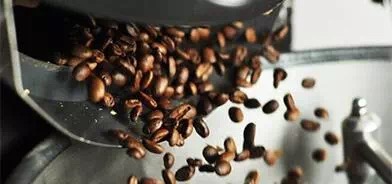
In addition, the density of raw beans determines the amount of heat needed for coffee to achieve an explosion, such as hard beans (denser than 70kg/hL) and soft beans (denser than 70kg/hL).
For example, if you find a hard bean with a sudden drop in RoR and RoC during an explosion, you are not providing enough heat; in turn, it also means that the coffee beans are very dense, so be sure to provide more heat during the "explosion" next time.
Baking is not only a science, but also an art. While doing a good job in data collection and controlling to the key points, you should also feel it with your heart and slowly experience the happiness that baking brings to you. In this way, you are bound to succeed!
Author: Anne Cooper
Important Notice :
前街咖啡 FrontStreet Coffee has moved to new addredd:
FrontStreet Coffee Address: 315,Donghua East Road,GuangZhou
Tel:020 38364473
- Prev
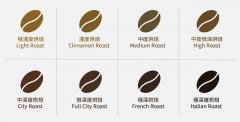
Coffee roasting degree picture HD small coffee roaster how to choose the baking curve?
Professional coffee knowledge exchange more coffee bean information please follow the coffee workshop (Wechat official account cafe_style) professional coffee roasting | coffee roasting is too complicated? A picture teaches you that shallow roasting in the roasting process can make coffee immature or defective beans more obvious, so you need to choose high-quality raw coffee beans for roasting. The third wave of paranoia that loves coffee all one's life
- Next
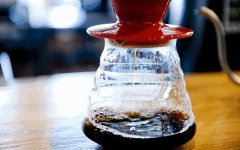
The temperature of hand-brewed coffee is more or less suitable, and the characteristics of the five techniques of blackening coffee by hand.
Professional coffee knowledge exchange more coffee bean information please follow the coffee workshop (Wechat official account cafe_style) hand-brewed coffee steaming and water injection methods hand-brewed coffee water temperature and powder water temperature data the influence of hand-flushing flavor after introducing the basic hand-brewing steps and hand-flushing utensils, this time bring
Related
- Beginners will see the "Coffee pull flower" guide!
- What is the difference between ice blog purified milk and ordinary milk coffee?
- Why is the Philippines the largest producer of crops in Liberia?
- For coffee extraction, should the fine powder be retained?
- How does extracted espresso fill pressed powder? How much strength does it take to press the powder?
- How to make jasmine cold extract coffee? Is the jasmine + latte good?
- Will this little toy really make the coffee taste better? How does Lily Drip affect coffee extraction?
- Will the action of slapping the filter cup also affect coffee extraction?
- What's the difference between powder-to-water ratio and powder-to-liquid ratio?
- What is the Ethiopian local species? What does it have to do with Heirloom native species?

